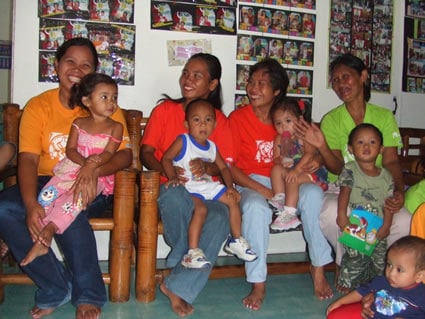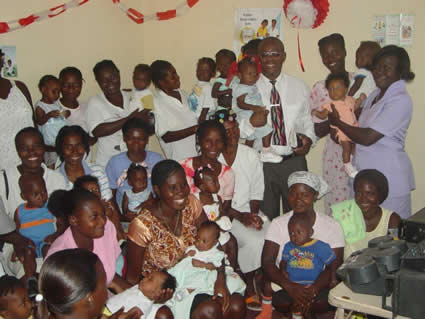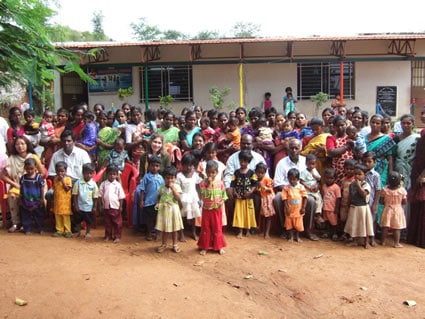Being pregnant, giving birth, caring for a newborn, and raising a child are all God-given tasks that are privileges, but in some cases, the stress they create is unbearable. Psychologists say that at least half of women are likely to get “the blues” or depressed in the weeks following childbirth, even in best-case scenarios.
Many of the mothers in our Child Survival Program cope with depression. They are neglected, abandoned and isolated.
In addition, they lack the knowledge and confidence to overcome the challenges in their lives. They may be single moms or they may be moms that were married as children. Either way, they are at a disadvantage, with little to no control over their own lives.
However, psychologists also say that one of the best solutions to fighting postpartum depression is the company of other people, especially the company of other women who have the same experiences.

The best resource that people have is each other. This seems like common sense and easy to make happen, but oftentimes it is not. Women in poverty live isolated lives. Often, they require permission to leave their homes. They cannot easily associate with other people.
Our Child Survival Program helps women because it offers them group-learning activities, opportunities for service to each other, and a community of faith.

Staff members break the barrier of isolation by conducting regular home visits and teaching mothers critical child survival lessons one-on-one. These interventions raise the self-esteem, confidence, and knowledge of the mothers.
As a result, women who initially did not want their pregnancies come to accept and cherish the lives growing in them. Women with complicated pregnancies and difficult births and postpartum depression now have support through each other. Mothers and babies are better off.

There truly is power in numbers, and our Child Survival Program facilitates the support that mothers provide to each other.
“Two are better than one because they have a good return for their work. If one falls down, his friend can help him up.” –Ecclesiastes 4:9-10a.







3 Comments |Add a comment
It’s great to know that these women in far off countries have a way out of depression, and what’s even better, the cure is free.
There are so many reasons to have a group of caring people around you, and it’s not just for the fellowship. It’s about support and laughter.
I even remember watching once, I think it was on 20/20 or something, and they were saying that the reason why the heart attack and diabetes rate is so low in Italy is because even though they eat food that is full of cholesterol, all that pasta and cheese and carbohydrates…the thing that differs from how they eat to how we eat, is that they don’t eat alone. It’s always a full table with family and friends at an Italian dinner.
What a blessing you are to Compassion! Thank you for this post, and for your hard work with these precious women and their children. I will pray the Lord lifts you up and comforts you, too, for I know you are seeing things that break your heart.
This is wonderful. The Moms get the love of Christ thru the church, each other and the children get it through the moms and their friends. Often we are told our sponsor children never have been told “I love you” by their parents. These mothers may never have heard it from anyone either. This is a wonderful way for the love of God to be known to these dear people. Thank you Compassion for making God’s love known to the world.